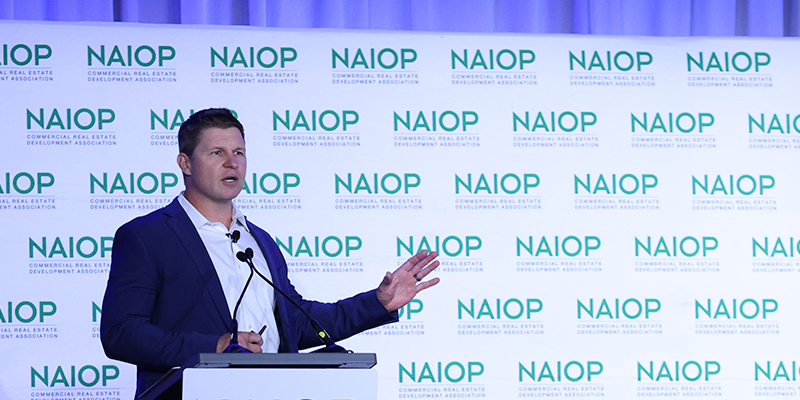Last week in Pittsburgh, President Joe Biden unveiled his long-awaited infrastructure proposal, an approximately $2.3 trillion initiative dubbed the American Jobs Plan. While infrastructure development is traditionally a bipartisan issue, the sheer scope of the plan and the Biden administration’s expansive definition of the term, plus the method adopted to pay for the effort, prompted immediate opposition from the Republican caucus in the Senate.
This, and a recent interpretation of budget reconciliation rules by the Senate’s parliamentarian, makes it more than likely Senate Democrats will plan to use budget reconciliation, which allows them to pass legislation with only 50 votes rather than the usual 60 needed to overcome a filibuster threat. Despite this procedural advantage, Biden’s plan will still require changes in order to ensure the unanimous support from Democrats he will need for passage.
Biden’s proposal is the second of three planned major initiatives of his domestic agenda. The first was the American Rescue Plan, a $1.9 trillion coronavirus relief bill passed in March. Then the current $2.3 trillion American Jobs Plan, followed by the third, the American Families Plan, expected next month and rumored to cost an additional $1 trillion.
While neither party in recent history has demonstrated fiscal discipline when it comes to the federal budget, the fact remains that next year’s deficit is expected to be the largest as a percentage of the economy since World War II, and that is striking serious fear into the hearts of centrist Democrats as well as Republicans. While Biden is proposing to increase taxes to pay for parts of his plan, politicians understand that tax increases that are permanent on paper often end up being temporary in reality.
In addition to the overall cost of the proposal, there are differing views in defining the term “infrastructure.” Many hold what they consider is a traditional understanding of infrastructure: roads, bridges and other “hard” transportation assets that will be available for use by future generations. The Biden administration is taking a much more expansive view of infrastructure beyond traditional transportation assets, seeking to transform aspects of the American economy, including the energy sector.
For example, on top of the approximately $621 billion for transportation related investments in the plan, the plan would also provide $580 billion on efforts to reduce greenhouse gas emissions and boost research to fight climate change. An additional $650 billion for school building, public housing modernization, water system upgrades, and other needs is also included. Biden also includes another $400 billion in funding for assets connected to what the plan calls “the caring economy,” such as community-based care for seniors, which is traditionally thought of as spending on social programs.
Maya MacGuineas, president of the Committee for a Responsible Federal Budget, a nonpartisan federal budget watchdog, captured the feeling of many in Congress when she was quoted in the Washington Post saying that the nation is “at a point about where our debt is about to reach unprecedented levels, and that comes with a lot of risks . . . [w]e should put out a bill that is investment in infrastructure and doesn’t fall to the trick of calling everything you want infrastructure.”
Finally, Biden proposes to pay for the plan by increasing the corporate tax rate from 21% to 28%, imposing a minimum tax on multinational corporations, and eliminating certain incentives to offshore jobs. The Biden administration has stated opposition to other user-fee type revenue-raising measures that while politically difficult, did enjoy bipartisan support. These included increasing the current gas-tax, and possibly developing a vehicle miles traveled tax for electric vehicles. Biden claims the plan is fully paid for, but critics call this misleading because the spending occurs over 8 years while the cost is recovered over 15 years of the higher corporate tax. A corporate tax rate increase to 28% is almost universally opposed by Senate Republicans, who count lowering the rate from 35% to 21% as one of the major policy achievements of the Tax Cuts and Jobs Act which they championed in 2017, believing this was needed to make U.S. corporations more competitive internationally.
If the only barrier to passing the American Jobs Plan was Senate Republicans, then Democrats, who control both chambers of Congress, could enact the bill through reconciliation. However, centrist Democrats also have concerns which will have to be addressed. Senator Joe Manchin (D-WV), for example, has already said he would oppose increasing the corporate tax rate to 28%, saying he thought 25% was more appropriate. Others will probably voice additional concerns as the legislation progresses. Without Republican votes and with such a slim majority, each Democrat Senator essentially has leverage amounting to a veto. The challenge for Biden and Democrat leadership will be to retain the support of the dominant progressive wing of their caucus as they address the needs of their more centrist members. Either way, expect some challenges and changes to the Biden plan over the next few months on the way to enactment.








